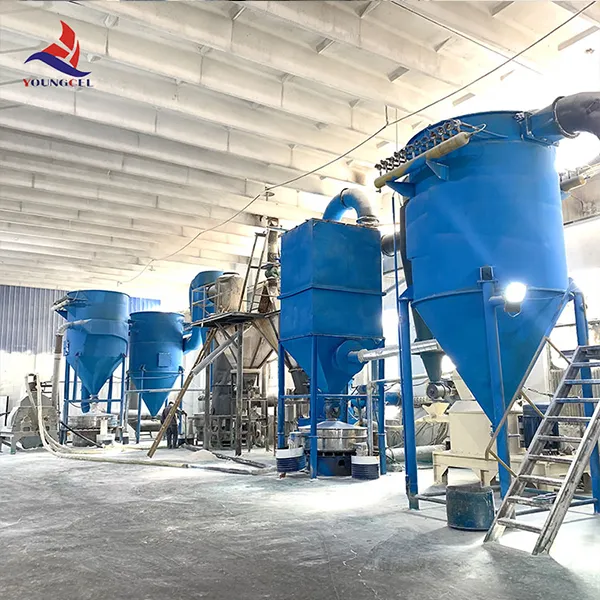The Role of Hydroxypropyl Methylcellulose (HPMC) in Chemical Adhesives
Hydroxypropyl Methylcellulose (HPMC) is a versatile cellulose ether that has gained significant attention in various industrial applications, including the formulation of chemical adhesives. Its unique properties make it an ideal candidate for enhancing the performance, stability, and efficiency of adhesive products. This article explores the importance of HPMC in chemical adhesives, focusing on its functionalities, applications, and benefits.
What is HPMC?
HPMC is a non-toxic and biodegradable polymer derived from cellulose, which is naturally abundant in plant materials. The synthesis process involves the substitution of hydroxyl groups in cellulose with hydroxypropyl and methyl groups, resulting in a compound that exhibits distinctive physical and chemical properties. HPMC is soluble in water, forming a gel-like consistency that can improve adhesion and enhance the workability of various formulations.
Functions of HPMC in Adhesives
1. Thickening Agent HPMC is widely used as a thickening agent in adhesive formulations. It increases the viscosity of the adhesive, allowing for better control during application. This attribute is especially important in construction and manufacturing processes where consistency and stability of the adhesive layer are critical.
2. Film-Forming Agent The ability of HPMC to form a continuous and cohesive film upon drying is one of its most notable features. This characteristic enhances the bonding strength of adhesives by ensuring that the adhesive layer remains intact and effectively adheres to different substrates.
3. Water Retention HPMC possesses excellent water-retention properties, which helps prevent the premature drying of adhesive mixtures. This quality is crucial for extending the working time of adhesives, allowing for adjustments during application and ensuring optimal bonding conditions.
4. Modified Release In certain applications, HPMC can be used to regulate the release of adhesive components. This can be especially beneficial in specialized applications, such as controlled-release drug delivery systems or specific industrial adhesives that require a timed setting.
Applications of HPMC in Chemical Adhesives
HPMC is utilized in a variety of adhesive formulations across multiple industries. In the construction industry, it is commonly found in tile adhesives, cement-based adhesives, and plaster applications. Its water-retention and thickening properties enhance the workability and performance of these products, ensuring durable and reliable bonding.
chemic adhes hpmc

In the packaging industry, HPMC is used in formulations for pressure-sensitive adhesives. The ability to create a strong bond with various substrates while maintaining flexibility makes it ideal for applications such as labels and tapes.
Moreover, HPMC is gaining traction in the field of biomedical adhesives. Its biocompatibility and biodegradable nature open up new avenues for applications in wound care and surgical adhesives, where safety and effectiveness are paramount.
Benefits of Using HPMC in Adhesive Formulations
Incorporating HPMC into adhesive formulations offers numerous benefits
- Improved Performance The use of HPMC enhances the overall adhesion strength, durability, and flexibility of the adhesive, making it suitable for a wider range of applications.
- Enhanced Workability By controlling viscosity and water retention, HPMC provides better application properties, allowing users to apply adhesives more easily and with greater precision.
- Environmental Considerations As a biodegradable polymer, HPMC presents a more environmentally friendly alternative to traditional synthetic adhesives, supporting the growing demand for sustainable materials in various industries.
- Cost-Effectiveness HPMC can often be incorporated into adhesive formulations without significantly increasing costs, providing manufacturers with a competitive edge in the market.
Conclusion
In summary, Hydroxypropyl Methylcellulose (HPMC) plays a crucial role in the development of chemical adhesives by enhancing their performance, stability, and user-friendliness. Its multifunctional properties make it an essential additive across various industries, from construction to packaging and biomedical applications. As the demand for high-performance, environmentally friendly adhesives continues to grow, HPMC will undoubtedly remain a key ingredient in the formulation of innovative adhesive products.
-
The Application and Significance of Construction RdpNewsMay.19,2025
-
Industrial Grade HpmcNewsMay.19,2025
-
Building Coating Adhesive Building Coating Adhesive HpmcNewsMay.19,2025
-
Application Of Hpmc For Detergent For Detergent In DetergentsNewsMay.19,2025
-
Application Of Hpmc Cellulose In Cement-Based MaterialsNewsMay.19,2025
-
Application Of High Quality Hpmc For Construction In The Field Of ConstructionNewsMay.19,2025




